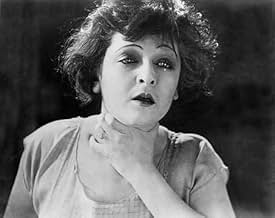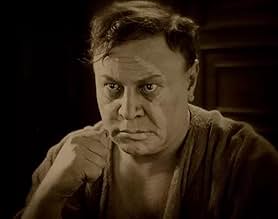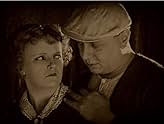अपनी भाषा में प्लॉट जोड़ेंPrologue: The murderer "Boss" Huller - after having spent ten years in prison - breaks his silence to tell the warden his story. "Boss", a former trapeze artist, and his wife own a cheap sid... सभी पढ़ेंPrologue: The murderer "Boss" Huller - after having spent ten years in prison - breaks his silence to tell the warden his story. "Boss", a former trapeze artist, and his wife own a cheap side-show that displays ''erotic sensations''. But he longs for his former glamorous life in ... सभी पढ़ेंPrologue: The murderer "Boss" Huller - after having spent ten years in prison - breaks his silence to tell the warden his story. "Boss", a former trapeze artist, and his wife own a cheap side-show that displays ''erotic sensations''. But he longs for his former glamorous life in the circus. When he meets the orphan Berta-Marie, he falls under her spell and leaves his ... सभी पढ़ें
- निर्देशक
- लेखक
- स्टार
- पुरस्कार
- कुल 3 जीत
- Acrobatic Ensemble
- (as Die Drei Codonas)
फ़ीचर्ड समीक्षाएं
The print I saw at New York's Museum of Modern Art did not have the 'prolog' either. Perhaps it was omitted when the film was released in the US.
This is a semi-expressionist film about a heavy-bodied catcher-husband, Boss Huller (Emil Jannings), whose wife, Bertha-Marie (Lya de Putti), is seduced from domestic bliss by the trio's lighter-bodied star flyer, Artinelli (Warwick Ward). The cather-husband imagines dropping his rival, the flyer, but murders him instead in a fight, and goes to prison. The seducing male flyer is the provocateur of extreme passion, a position subsumed by female aerialist characters in later films. But the male aerialist as a criminal, even murderer, intermittently reappears in representation because he epitomizes a capacity for extreme risk-taking, which is translated into socially risky immoral behavior. But it is the male flyer who becomes especially vulnerable to depiction as a fallen hero, literally and for losing emotional control.
Although little-known today, Variety is one of the major works of German Expressionism. It's an immorality of emotion drama with a fine performance by (the always great) Jannings and the wonderful visual film-making that is the hallmark of the Expressionist movement (extraordinary cinematography by Karl Freund). Variety was heavily censored for its American release; how it was changed makes it almost as interesting as a case study in film censorship as it is enjoyable as a movie.
In its original version, the film begins with a drawn-out portion showing how Emil Jannings falls in love with Lya De Putti, left his wife for her, and created a trapeze act with his lover. This part of the story was excised completely by the American censors, and title cards added to redefine Jannings and De Putti as the married couple of the U.S. release version. The censors' intent was to erase the plot point of casting adulterous lovers as the established couple in a love triangle. The effect was to far more radically transform the story. The unfaithful husband who is in his turn betrayed by his unfaithful lover is transformed into a sympathetic cuckold. The opportunistic temptress who catches two men only to end up with none is transformed into a young wife who succumbs to temptation. From unsparing morality play to conventional melodrama, courtesy of censorship.
The love story involves Herr "Boss" Huller ( Herr Emil Jannings ) and the seductive orphan Frau Berta-Marie ( Fay Lya de Putti ) Once a famous trapeze artist, "Boss" has been reduced to managing a sordid fairground attraction together with his wife ( Frau Maly Delschaft ). He falls madly in love with Berta-Marie and seeks to start a new life with his lover, leaving his wife and child behind.
The virtuosity in the dramatic use of the camera-work together with film narrative by Herr Dupont is simply great. Through the eyes of "Boss'", Dupont skilfully compares the young and vital Berta-Marie and the faded and worn wife. Later the camera shoots from behind Huller's back to depict a desperate man utterly defeated and broken. The expressive close-ups wherein hidden feelings are made transparent are also superb as is the portrait of the people of Berlin, inhabitants of a decadent but thrilling city. The frenzied nightlife of Weimar Berlin (Wintergarten, Vaudeville Theater, fairgrounds) is vividly captured by the camera-work of Herr Karl Freund und Herr Carl Hoffmann.
The camera-work is especially impressive during the trapeze sequences wherein Herr Dupont, with the aid of optical special effects by Herr Ernst Kunstmann, employs many different camera angles to emphasize the riskiness of the trapeze act and the riskiness of the relationship between "Boss", Berta-Marie and their partner, the famous artist Herr Artinelli ( Herr Warwick Ward ) . The tension builds during the performance because we know that Herr "Boss" has discovered that Berte-Marie and Artinelli have become lovers.
The actors are splendid, specially Herr Jannings who, when properly directed , can express powerfully the most inner and divergent human feelings, Frau Lya de Putti, is no femme fatale type at all but that certainly is the point; she's attractive enough but common, someone easily charmed by a stylish man like Herr Artinelli.
"Varieté" is an exemplary work wherein all the achievements and virtuosity of German cinema of that time are on display. You have Expressionism intertwined with social comment, a fascinating portrait of the times. Dupont's wavers a bit at the end and allows a minor concession which is forgivable and by no means fatal to the film as a whole.
And now, if you'll allow me, I must temporarily take my leave because this German Count must refuse a splendid offer to be a fairground attraction.
None of this is absolutely necessary to enjoy the film, however, which has beautifully detailed performances and terrific camerawork by Karl Freund. The trapeze sequences will leave you giddy. The montages of variety acts are witty and vibrant. Berlin nightlife in the '20s looks glamorous. And Jannings surely has one of the classic silent-screen actors' faces, eloquently conveying a wide spectrum of emotions.
"Variete" was a sensation when it appeared, primarily for its camerawork. At the time, director EA Dupont took most of the kudos and seemed launched on a promising career. But he was tapped out after his next flick, the estimable "Picadilly," and in retrospect, Freund is the creative force whose part in "Variete" assumes a place in a major body of film work. That being said, Dupont's work with the actors here is outstanding and a key part of the film's success.
क्या आपको पता है
- ट्रिवियाAmerican humorist S. J. Perelman was so taken with this movie he wrote about it 40 years later in an essay entitled "And, in the Center Ring, That Stupendous Death-Defying Daredevil..." He said "Alfredo Cordona, the wizard of the flying rings, and his partners doubled for the actors. I saw the picture four times, reacting so volcanically to Cordona's forward triple somersault that I almost rent the chair in front of me to matchwood."
- कनेक्शनEdited into Prisoner of Paradise (2002)
टॉप पसंद
विवरण
बॉक्स ऑफ़िस
- US और कनाडा में सकल
- $7,09,613
- चलने की अवधि1 घंटा 44 मिनट
- ध्वनि मिश्रण
- पक्ष अनुपात
- 1.33 : 1
इस पेज में योगदान दें
































